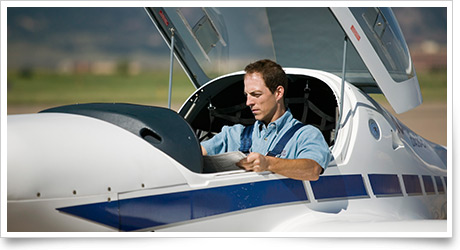training tips'It's probably nothing'
The trainer you will fly solo today has always seemed to have a slightly slacker feel in its control column than the others—not surprising because it is the high-time member of the fleet. So it comes as a bit of a surprise when you arrive at the “flight controls free and correct” item on your pre-takeoff checklist, that the “free” part doesn’t pass muster. Something seems to be constraining the cable movement; it almost seems that there is less control travel available than before.
"It’s probably nothing, just my overactive imagination,” you say to yourself, sneaking a glance at the trainer’s N-number placard to confirm that this is the trainer known for less-than-taut controls.
“Maybe they finally replaced those old cables,” you think next, giving the control wheel another pull in hopes of putting your doubts aside.
Two other aircraft have joined you in the runup area. One of them is clearly ready to go, but you were first, and you have the easiest access to the runway.
Decision time! If you don’t fly today, it will be a week before you can go again. Then you go on vacation. Then your instructor goes on vacation.
The continuing uncertainty reminds you that, as the saying goes, "If you don't know, don't go." If nothing else, taxiing back to investigate further or have a mechanic take a look should give you an answer. It’s not impossible that you have uncovered damage that occurred during a previous flight. Sometimes the walk-around inspection doesn't catch everything, as this example illustrates. Pre-takeoff checks are another line of defense.
Congratulations for paying careful and undistracted attention to your pre-takeoff checklist. Whatever the outcome, this has already been a day of learning. training productsSporty's unveils ForeFlight Mobile training courseSporty's has a new 60-minute online training course on how to use ForeFlight Mobile, a popular app for pilots. It was created for prospective users, new ForeFlight pilots and experienced pros alike. Lessons include starting a subscription, choosing the right route with route editor, keeping your digital charts up to date, learning the preflight iPad checklist you should use every time, and flying along on a real trip to see everything in action. New edition of takeoffs, landings book to be releasedAuthor Ron Fowler will release a newly combined edition of his previous two books, Making Perfect Takeoffs and Making Perfect Landings, on June 12. The new book, Making Perfect Takeoffs and Landings in Light Airplanes, shows pilots how to develop total awareness for the situation, the airplane, and the self—and to convert that awareness into perfect takeoffs and landings. The book costs $19.95.
Note: Products listed have not been evaluated by ePilot editors unless otherwise noted. AOPA assumes no responsibility for products or services listed or for claims or actions by manufacturers or vendors. final examQuestion: I am a private pilot with a multiengine rating. I did my checkride in a Piper Seminole that has a VMC speed established by the manufacturer. Can I fly a multiengine aircraft that has no published VMC data, like a Cessna Skymaster?
Answer: Yes, you can fly a centerline thrust multiengine aircraft with a multiengine rating on your pilot certificate. FAA's 8900.1 Flight Standards Information Management System document gives guidance on a "Limited-to-Center Thrust" limitation. It states that the limitation is placed on a pilot certificate when the airplane used for a practical test does not have a VMC speed published on the airplane's type certificate data sheet or approved flight manual. This limitation is issued only to a pilot if he or she did the checkride in an aircraft like a Cessna Skymaster. However, if the practical test was done in an aircraft like a Piper Seminole, the pilot can now fly either a Seminole or a Skymaster. This does not work if the pilot did the practical exam in a Skymaster and then wanted to fly a Seminole. In short, if you have a multiengine rating with no restriction, you can fly a twin with or without a published VMC speed. If you have the restriction, you can fly only centerline thrust aircraft with no published VMC speed.
Got a question for our technical services staff? Email [email protected] or call the Pilot Information Center, 800/872-2672. Don’t forget the online archive of “Final Exam” questions and answers, searchable by keyword or topic. |
 It's a source of real pleasure to realize that with your growing skill and knowledge has come a definite feel for your trainer, or for the several trainers in the flight school’s fleet. What one lacks in instrumentation and amenities it makes up for with the gutsy performance of its newly
It's a source of real pleasure to realize that with your growing skill and knowledge has come a definite feel for your trainer, or for the several trainers in the flight school’s fleet. What one lacks in instrumentation and amenities it makes up for with the gutsy performance of its newly 

